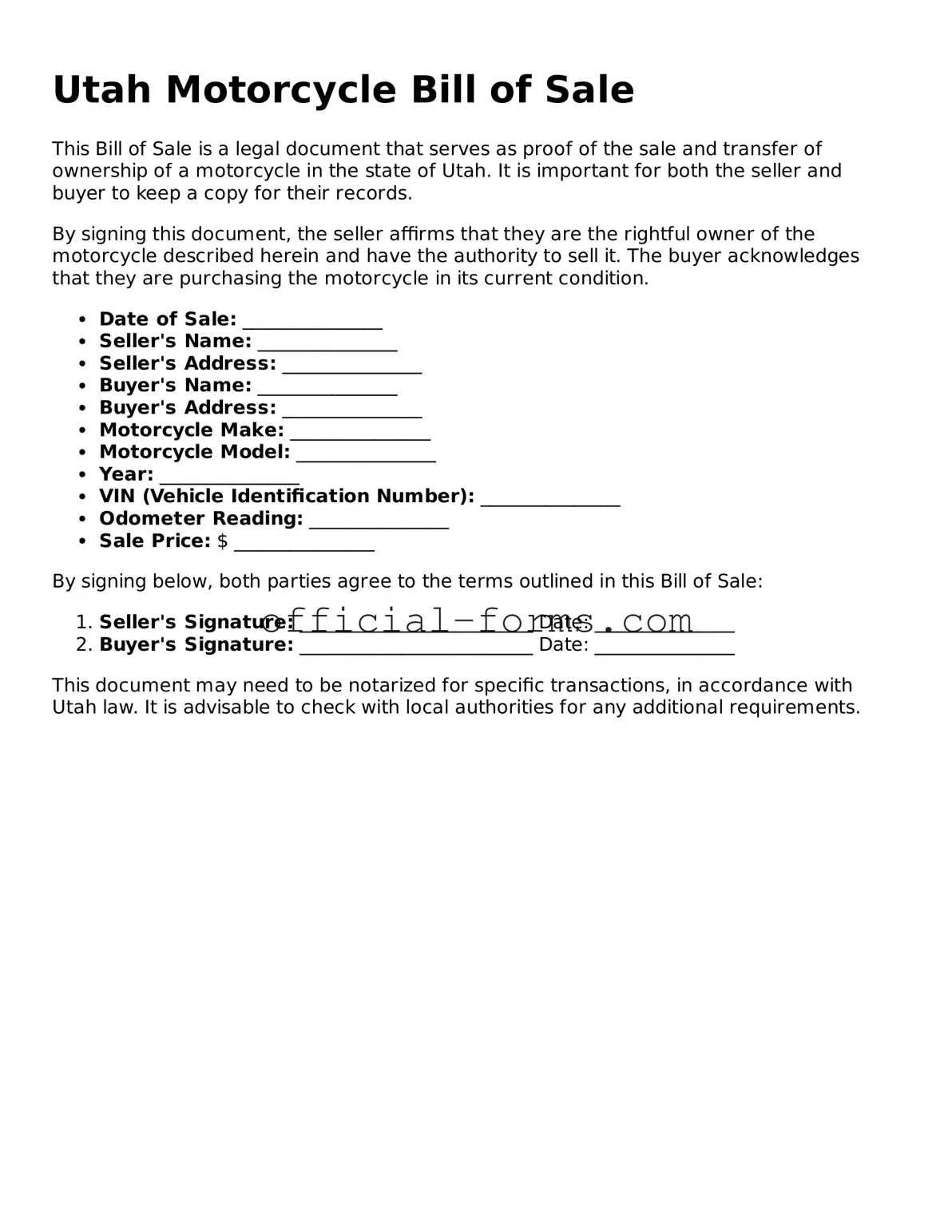When filling out the Utah Motorcycle Bill of Sale form, many individuals make common mistakes that can lead to complications in the transaction. One frequent error is neglecting to provide complete information about the motorcycle. This includes details such as the Vehicle Identification Number (VIN), make, model, and year. Omitting any of this information can create issues when registering the motorcycle or proving ownership.
Another mistake involves not including the correct names and addresses of both the buyer and seller. It is crucial that this information is accurate and matches official identification. If there are discrepancies, it may raise questions about the legitimacy of the sale, potentially leading to disputes down the line.
Many people also overlook the importance of signatures. Both the buyer and seller must sign the document to validate the transaction. Failing to secure the necessary signatures can result in the bill of sale being deemed invalid, which can create significant problems when transferring ownership.
In addition, some individuals forget to include the sale price. This detail is essential not only for the transaction itself but also for tax purposes. Without a clearly stated sale price, the state may have difficulty assessing taxes, and the buyer could face unexpected fees later.
Another common mistake is not keeping a copy of the completed bill of sale. Both parties should retain a copy for their records. This serves as proof of the transaction and can be invaluable if any issues arise in the future.
Some individuals may also fail to check for accuracy after filling out the form. Simple typos or incorrect information can lead to complications. A quick review before submission can save a lot of time and hassle later.
Additionally, individuals sometimes neglect to date the bill of sale. A date is important for establishing the timeline of the transaction. Without it, there could be confusion about when the sale occurred, which can affect ownership rights.
People may also forget to indicate whether the motorcycle is sold "as is." This phrase clarifies that the buyer accepts the motorcycle in its current condition, which can protect the seller from future claims regarding defects or issues.
Some sellers mistakenly believe that a bill of sale is not necessary for a motorcycle transaction. However, it is a critical document that provides legal protection for both parties. Not using it can lead to disputes over ownership or condition later on.
Lastly, individuals sometimes fail to check local regulations regarding the bill of sale. Different states have varying requirements, and it's essential to ensure that the form meets Utah's specific guidelines. Ignoring these regulations can lead to complications that may delay the registration process.
